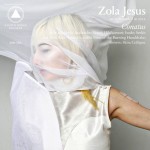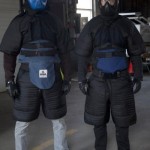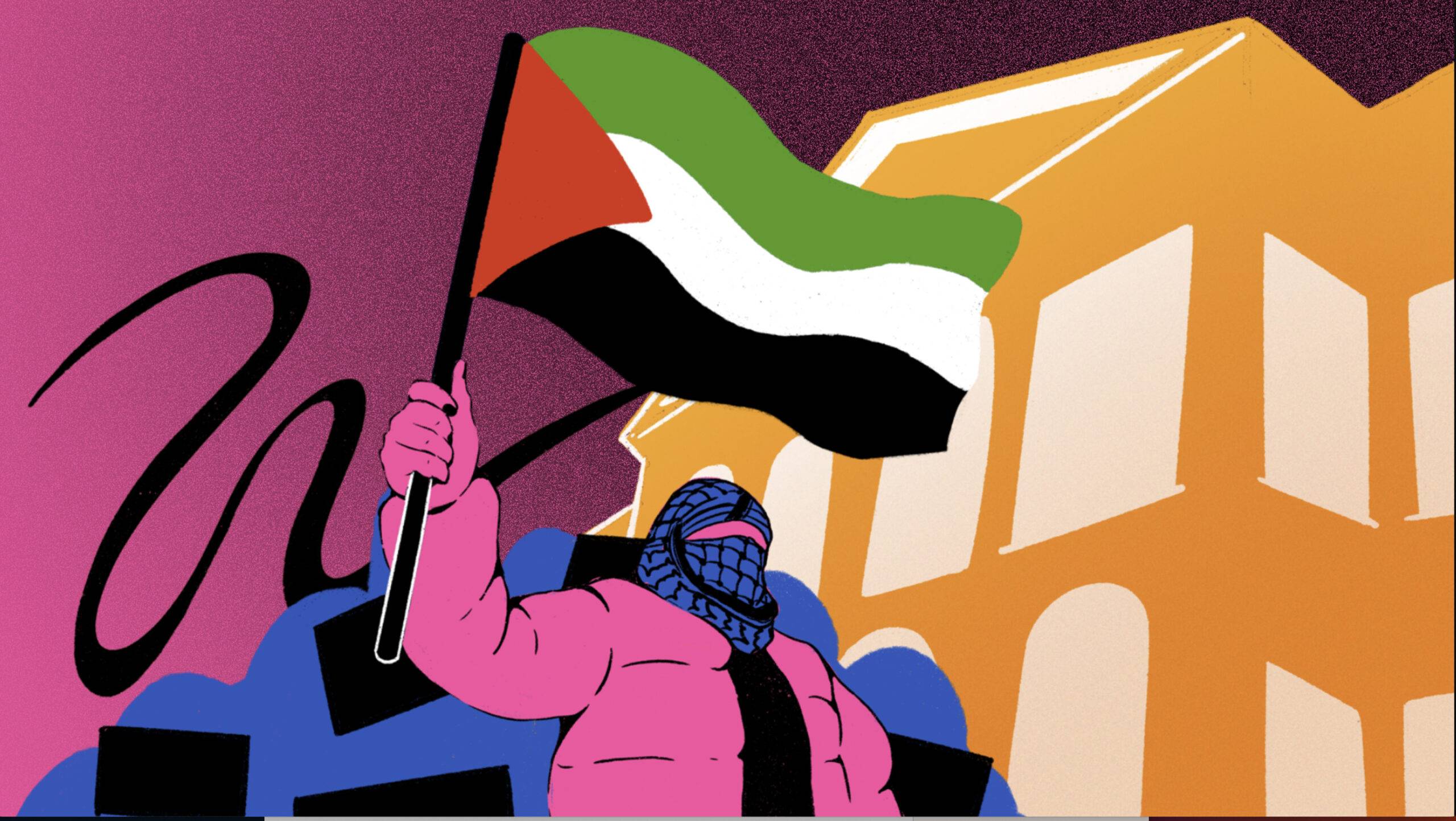“Insertions” from 2001 and 2007 illustrate this shift. While the photos from 2001 still indicate a primary focus on the action itself, hence its experience, they do not yet imply an intentional focus on any specific object. However, once we move onto the “Insertions” from 2007, six years after the attacks of September 11, we are faced with a reenactment of the act of insertion; this time bodies exist juxtaposed with “objects of authority,”and do not necessarily exist inside them. The slight change is interesting because it speaks to a much broader level of the signification applied to specific objects after the 9/11 attacks, either as signifiers of security, or attention grabbers for possible terror attacks and as a result the practice of inserting fear into American daily life. By photographing themselves next to security barriers in front of critical locations such as the Wall Street and the Federal Reserve Building, Ames and Bordwin propagate question marks at these no-go zones, turning them into their own territories of public discourse through direct involvement with the object.
The repetitious use of the public security barrier is a crucial symbol of post 9/11 change for Type A’s creative process. For the Tang Museum, NY installation in 2009 they presented bent concrete barriers forming two circles as a reference to the Twin Towers. Later, the same piece ignited panic in the museum-goers at the De Cordova Museum, MA in 2010 over whether there existed a potential terrorist threat to the museum itself. Through another variation of the same installation at the Aldrich Museum, CT in 2011, “Barrier” lost its original state of being a security signifier and to the very surprise of the two artists it reached a level of “highly aesthetic art object.” This discussion is significant when we contemplate whether objects as such are also used as symbols of fear not only by the artists, but also by the police and in the long run the American government, which indeed creates a fragile tension for the audience in understanding where the personal experience ends, and the social responsibility begins.
Speaking to the same idea, the “Target” series, 2011, Type A’s current work in progress, is a parody of the manufacturing and usage of shooting targets. Type A’s photographic series involves playful reenactments of abduction, abuse, armed robbery, or rape scenes as seen on the Law Enforcement Targets Inc.’s website. LE Targets is a designer of training targets and supplies for military, government agencies, gun clubs and shooting enthusiasts, with the main goal of “Targeting for a safer America,” and one of their best selling item is the Bin Laden Target.
Type A’s production of these parody targets performed by friends, family members or even other artist and curatorial colleagues, is interesting in the sense that once again, we see the two artists focusing not on the personal action or the experience anymore but what a mechanically reproduced image of a particular event represents in its object form when placed within the social discourse. The fact that the new target posters created by Type A are also on sale on the LE Targets website, adds another layer of sarcasm to the work. The playful approach by Type A in investigating the change of imagery and objects as they gain political content and symbolism throughout the post 9/11 discourse, becomes more valuable once again, when we question whether these objects can also become symbols of public manipulation utilized by the state authority.
Surprisingly enough, similar to what the art historian and critic Homi Bhabha also presented in his lecture two weeks ago at the AIC, the internalized panic, and fear from terror seems to be a very prominent discourse for contemporary art in the post 9/11 American context. Considering a discussion on borders, individual and shared territories, as well as zones of fabricated fear and terror, it is time we ask, where does the individual-social end? Where does the global-social begin? Type A strongly disagrees with the idea of the “lone auteur in the studio,” and they think it is out of date to not be outspoken, especially for artists who are concerned with social and political work. They outline their formula for art making as “ 1 + 1 =3,” meaning the end result of their collaborative practice is always a third extension, a thing they can both work towards and for.
Maybe if we think of the global exchanges, even those of global fear and terror, as also extensions of the individual experiences we go through as members of a global society, we might come to terms with a better understanding of how action and experience can be stripped of content and meaning, and how, as a result, the political and social stereotypes might find life simply in objects. Their work speaks to a politically engaged audience, or at least strives to instigate such participation in people who may not yet be there and who may want to learn more about how to see beyond the barriers.






















